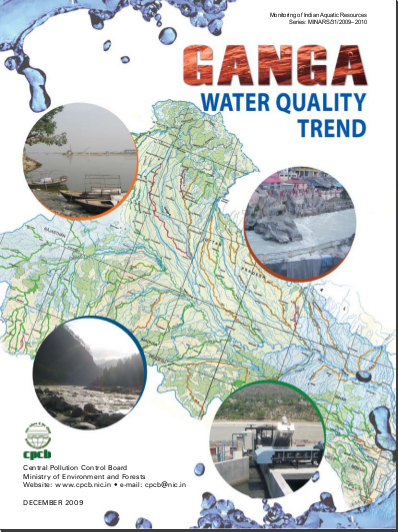Rivers
Kelo dam, Raipur, Chattisgarh oustees agitation - Hunger strike called off after meeting with Chief Minister - Audio updates from CGNet Swara
Posted on 19 May, 2011 11:03 AMArticle courtesy: CGNet Swara
Kelo dam hunger strike: 7 more farmers shifted to hospital
Rajesh Tripathi is reporting from continuing hunger strike of farmers from Kelo dam site in Raigarh district of Chhattisgarh. He says 7 more farmers have now been shifted to hospital. 4 were shifted before in last 2 days.
Hathinikund barrage at Tajewala, Haryana,a complete failure: Press release by Maan Mandir Seva Sansthan
Posted on 11 May, 2011 01:16 PMAs you are aware of the fact that the Government has constituted an inspecting body comprising of high authority personnel’s of Central Water Commission, Planning Commission, Haryana Irrigation Department, Delhi Jal Board, Ministry of Environment and Forests and 6 members of Yamuna Bachao Aandolan. The team will then submit its report to the Central Government within one week and forthcoming plans will be discussed then.
The team had visited the Hathinikund barrage and told that it was a complete failure as the water is not at all being released from Hathinikund barrage. They came to know about the matter after enquiring with local public. The imposter authorities had released the said amount (160 cusecs) of water. The local public there told that they are habitual of crossing the Yamuna by riding on their bikes as it remains completely dry, but the water has been released.
Groundwater management in a coastal aquifer in Krishna River Delta – A paper in Current Science
Posted on 10 May, 2011 08:03 AMGroundwater conditions in the multi-aquifer system in the delta, were studied through an integrated approach using hydrochemical, hydrogeological and isotopic techniques. This study was taken up because of the reported seawater intrusion into the groundwater system of this agriculturally rich region.
Ganga water quality trend - A report by Central Pollution Control Board (2009)
Posted on 30 Apr, 2011 05:39 PM The data has been collected over a period of many years from 39 water quality monitoring stations along the main river and 102 stations on its tributaries which were setup in 2008/09.
The data has been collected over a period of many years from 39 water quality monitoring stations along the main river and 102 stations on its tributaries which were setup in 2008/09.
The study focuses on the parameters for dissolved oxygen, (DO), biochemical oxygen demand (BOD) and faecal coliforms (FC) as these indicate the biological health of the river. The period of study for the river Ganga is 1999-2008. The study finds that most of the water quality parameters studied do not meet the standards.
"In Search of Yamuna: Reflections on a River Lost" - A recent book as an ode to rivers
Posted on 27 Apr, 2011 02:26 PMAbout the book
 In the present mood of transience and conflict, amidst the emerging riverfront politics, these communities seem to be caught in the eye of the storm.
In the present mood of transience and conflict, amidst the emerging riverfront politics, these communities seem to be caught in the eye of the storm.
Dwarekeshwar river basin of West Bengal : A unique combination of flash flood zone, monsoonal flood zone & tidal zone
Posted on 27 Apr, 2011 12:59 PM In India, at national level when all the planners are saying about the water grid, river linking project, i
In India, at national level when all the planners are saying about the water grid, river linking project, i
Citizen's uprising against encroachment and pollution of Ram Nadi, an urban river in Pune, Maharashtra
Posted on 25 Apr, 2011 11:37 AMForwarded to the portal by: Parineeta Dandekar
Inviting endorsements on a submission to the WGEEP for declaring the rivers in the Western Ghats as Ecologically Sensitive Areas (ESAs)
Posted on 22 Apr, 2011 12:58 PMDear friends,
We are all aware of the immense ecological, cultural and social significance of rivers originating and flowing through the Western Ghats. This includes source regions of East flowing rivers like Krishna, Godavari and Cauvery and the source, riparian and estuarine region of all West flowing rivers.
We are lucky to still have some of the very few and very rare 'free flowing rivers' in the country. Most of the rivers in our country have been dammed and diverted. This has changed the ecological and physical characteristics of these rivers completely. Today, it is difficult for us to visualise the amazing range of ecological goods and services that an undammed, free flowing river can provide. Some such rivers in the Western Ghats are Shastri, Aghanashini, Gargai and Seetha Nadi.
Drinking water quality monitoring and development of surveillance mechanisms - A pilot study done by NEERI in New Delhi
Posted on 20 Apr, 2011 02:30 AMThe WHO guidelines for drinking water quality aim to protect public health and the key way to ensure this is through the adoption of Water Safety Plans (WSP). WSP includes setting of health targets, risk analysis and its assessment to identify priority hazardous scenarios and management of the risk.




